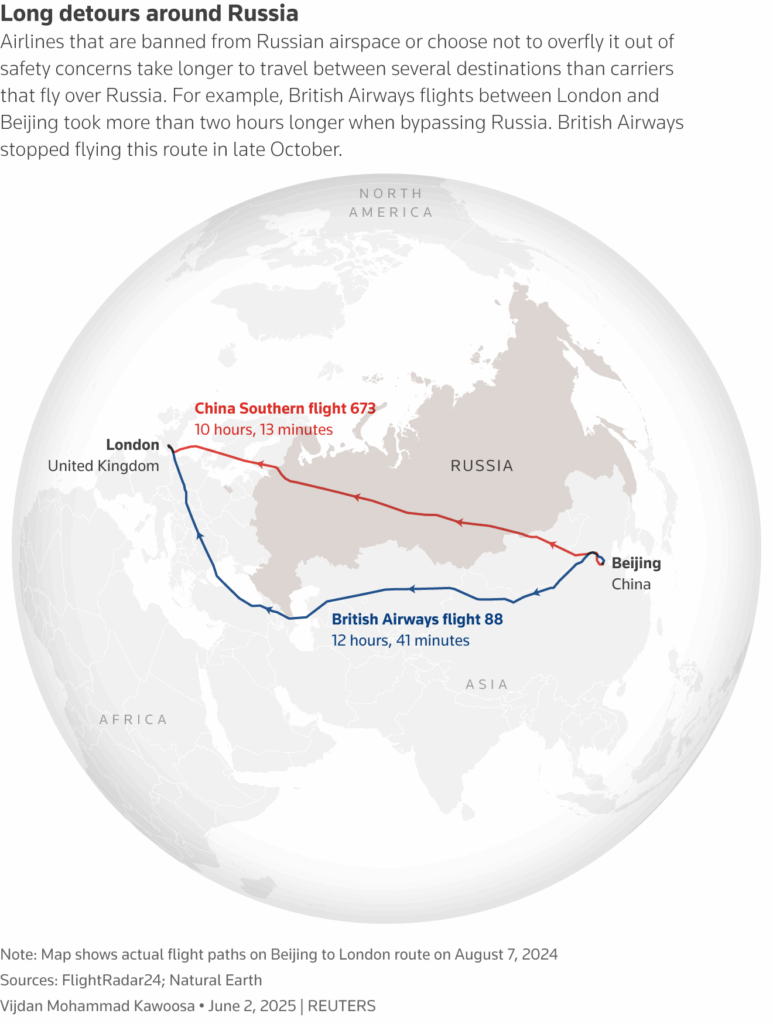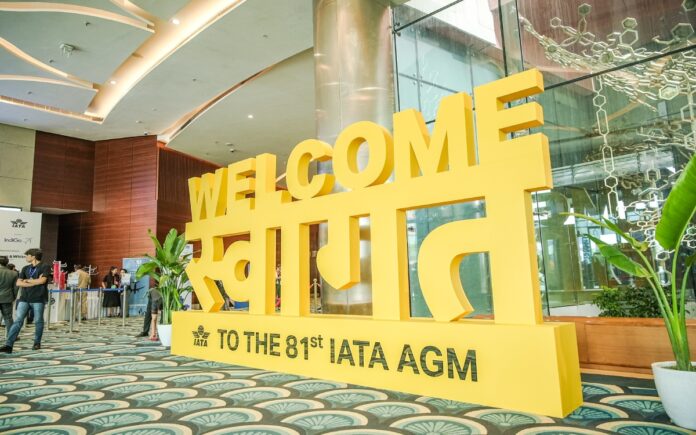New Delhi: Escalating missile threats, airspace restrictions, and unpredictable conflict zones are putting intense pressure on global airlines, affecting both their operations and profitability. Executives warn that the increasingly volatile security landscape — marked by missile attacks, drone activity, GPS jamming, and even shoot-downs — is forcing carriers to reroute flights at short notice, inflating costs and compromising efficiency.
Airlines are bearing the brunt of frequent diversions and last-minute cancellations, often losing market share and racking up operational expenses. As the industry navigates this turbulent terrain, it is ramping up investments in data and security planning to mitigate risks.
“Flight planning in this kind of environment is extremely difficult … The airline industry thrives on predictability, and the absence of this will always drive greater cost,” said Guy Murray, head of aviation security at European airline TUI.
Airspace closures have intensified around major conflict zones including Russia and Ukraine, the Middle East, India-Pakistan borders, and several African regions — significantly limiting viable flight paths.
“Compared to five years ago, more than half of the countries being overflown on a typical Europe-Asia flight would now need to be carefully reviewed before each flight,” said Mark Zee, founder of OPSGROUP, a risk-sharing organization for aviation professionals.
Skies Under Siege
Since October 2023, the Israeli-Palestinian conflict has intensified risks in the Middle East, placing commercial aircraft in close proximity to missile and drone activity. In Russia, even airports in Moscow face periodic shutdowns due to drone incursions. Meanwhile, GPS spoofing and jamming have surged globally, particularly along geopolitical fault lines.
The recent flare-up between India and Pakistan further complicated airspace access, with both nations temporarily denying each other’s aircraft access to their skies.
“Airspace should not be used as a retaliatory tool, but it is,” noted Nick Careen, Senior VP for Operations, Safety and Security at the International Air Transport Association (IATA), during the organization’s annual meeting in New Delhi.
For carriers like IndiGo, these diversions are undermining emissions-reduction efforts and efficiency gains. “Recent diversions are undoing progress,” said Isidre Porqueras, Chief Operating Officer at the Indian airline.

Worst-Case Reality
Beyond finances, the industry’s gravest fear is a commercial aircraft being struck by a weapon — either accidentally or deliberately. This is no longer a theoretical concern. In December, 38 people were killed when an Azerbaijan Airlines flight crashed in Kazakhstan after reportedly being shot down by Russian air defenses. Similarly, five people died in October when a cargo plane was downed in Sudan.
According to Osprey Flight Solutions, six commercial planes have been shot down since 2001, with at least three near-misses recorded.
Also Read | 36 Years On: Global Voices Remember Tiananmen Square Massacre
IATA Director General Willie Walsh emphasized the need for stronger global information-sharing to prevent such tragedies. “Governments need to collaborate more effectively to keep civil aviation secure,” he said.
Although safety statistics reflect a steady decline in aviation accidents over two decades, these figures typically exclude incidents linked to conflict zones.
In February, IATA flagged such conflict-related events as a top concern for global aviation safety, urging urgent international coordination.
Conflicting Routes, Conflicting Risks
Airlines independently determine their flight paths based on a patchwork of government advisories, intelligence sources, and inter-airline communication — resulting in inconsistent routing strategies.
Since the Ukraine war in 2022, Western carriers have been barred from using Russian airspace, placing them at a cost disadvantage compared to airlines from China, India, and the Middle East, who continue to fly over the region using shorter and more fuel-efficient northern routes.
Shifting geopolitical realities are evident in Singapore Airlines’ Flight SQ326 from Singapore to Amsterdam, which has changed its route three times in the past year. After avoiding Iran in April 2024 due to Israel-Iran missile exchanges, the airline rerouted over Afghanistan. As tensions escalated between India and Pakistan, the flight adjusted again, now flying through the Persian Gulf and Iraq.
Singapore Airlines declined to comment on the route changes.
Meanwhile, pilots and flight attendants are increasingly concerned about the risks of flying through contested airspace.
Also Read | South Korea’s New President Lee Pledges to Heal Nation After Martial Law Crisis
“IATA says airlines should decide if it’s safe to fly over conflict zones, not regulators. But history shows commercial pressures can cloud those decisions,” said Paul Reuter, Vice President of the European Cockpit Association.
While crew members have the right to refuse routes due to safety concerns, including conflict zones, IATA’s Careen reaffirmed that airlines prioritize crew safety.
“Most airlines, in fact, I would say the vast majority of them, do not want crew on an aircraft if they don’t feel comfortable flying,” he said.



